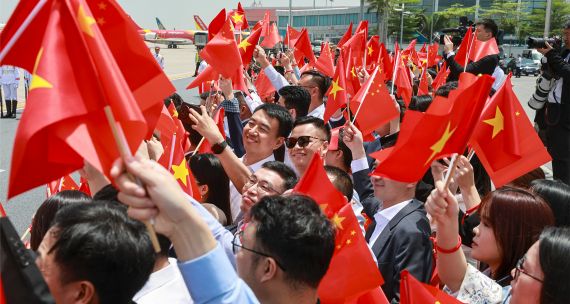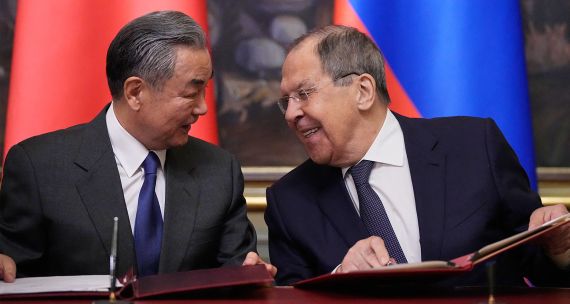The Takeaway
In response to the April 2 U.S. tariff announcement – 10 per cent baseline import taxes effective April 5 and a 24 per cent reciprocal tariff starting April 9 – Japanese Prime Minister Ishiba Shigeru and U.S. President Donald Trump held a 25-minute phone call on April 7, during which Ishiba requested reconsideration. Although President Trump subsequently announced a 90-day pause on the reciprocal tariffs on April 9, Japan nonetheless finds itself in shock. Washington has indicated that Japan will receive priority in upcoming trade talks, but some politicians in Tokyo are feeling betrayed by Trump’s rejection of Japan’s request for an exemption and caution against undue optimism about the bilateral future.
In Brief
- In March, Trump accused Japan of currency manipulation, and on April 2, labelled Japan’s trade practices “unfair,” citing a 700 per cent tariff on U.S. rice – a claim Tokyo firmly denies. With a 24 per cent levy potentially hitting Japanese exports, Japanese government officials have voiced “deep regret” over Trump’s tariff move. A 25 per cent levy on steel and aluminum has already been in place since March 12, with no country exempt.
- With 25 per cent auto tariffs also in effect since April 3, Toyota, Honda, Nissan, and Mazda could lose an estimated C$15.3 billion (1.6 trillion yen) annually, reflecting the automotive sector’s 28 per cent stake in Japan’s total U.S.-bound exports. Analysts further warn that higher import duties on cars could trim Japan’s GDP growth by 0.2 per cent over two years.
- Deeming U.S. tariffs a “national crisis,” the ruling Liberal Democratic Party (LDP) and Prime Minister Ishiba established a new committee on April 11 to address intensifying tariff pressures. As part of its domestic response, the Japanese government is also considering a cash handout of C$286-C$476 (30,000–50,000 yen) to every citizen, anticipating that these higher tariffs imposed by the Trump administration may persist for the foreseeable future.
- Japanese industry leaders are seeking strategic exemptions while policy-makers are dispatching newly appointed cabinet-level envoys for direct talks with their U.S. counterparts. Prime Minister Ishiba signalled on April 4 that Japan is weighing various responses to the U.S., including possible retaliatory duties under domestic law and action through the World Trade Organization.
Implications
During Prime Minister Ishiba’s official visit to Washington in February 2025 – the first leader from Asia to meet with President Trump – Japan pledged to bolster “America First” objectives by expanding economic co-operation and reaffirming U.S. defence commitments in the Indo-Pacific. Trump’s inclusion of Japan in broad reciprocal tariffs on April 2 has taken Japan by surprise, as Japan had anticipated exemption given its ‘special status’ as the U.S.’s key ally and top investor. Japan’s upcoming talks with the U.S. this this month will need to take up where the summit left off, addressing Japan Steel’s acquisition of U.S. Steel, and broader currency policy co-ordination in addition to tariff negotiations.
Japanese firms are proactively trying to insulate themselves from trade headwinds. Honda’s decision to source hybrid vehicle batteries from Toyota’s North Carolina plant, for instance, signals deeper inter-automaker collaboration aimed at blunting tariff impacts. Honda may also consider further expanding its production in the U.S., as 38 per cent of Honda’s U.S. sales are currently sourced from Canada and Mexico. Meanwhile, Japanese conglomerate SoftBank’s C$141.4 billion pledge toward U.S.-based AI ventures highlights leading corporations’ desire to maintain goodwill. On the policy side, Japan has lobbied for steel and aluminum exemptions, emphasizing that specialized Japanese metals remain crucial to U.S. manufacturing. Talks to acquire American military hardware – possibly the C17 cargo aircraft – likewise reflect efforts to appease Washington’s defence-spending expectations, set by Tokyo to reach two per cent of GDP by 2027.
Tensions with the U.S. may lead Japan to upgrade its trade relations with China. While Tokyo revised export rules in 2023 to require licences for 23 types of advanced semiconductor tools –responding to Washington’s push to curb sensitive tech transfers – the policy stopped short of explicitly naming China. This reflects Tokyo’s desire not to overly antagonize China, which remains central to Japan’s supply chains. Indeed, Prime Minister Ishiba has pledged to pursue a “strategic and mutually beneficial relationship” with Beijing, including planned summits and high-level business missions. As tariff pressures and geopolitical risks intensify, balancing national security and economic interdependence realities will remain a critical challenge for Japan.
What’s Next
- Japan–China Engagements and Trilateral Co-ordination: Prime Minister Ishiba’s planned May visit to China highlights Japan’s strategic hedging as U.S. tariffs expand. A recent trilateral economic and trade meeting with Beijing and Seoul, the first in five years, emphasized shared concerns over protectionism and supply chain stability. Tokyo aims to strengthen regional ties and explore alternative trade avenues, including a trilateral free trade agreement with China and South Korea to reduce vulnerabilities linked to the U.S. market.
- Domestic political repercussions: There is now mounting criticism of Ishiba’s decision to hold off on immediate retaliation as too feeble a response. The end of the 90-day grace period aligns with Japan’s Upper House elections in July, which are critical for Ishiba’s LDP to retain a majority. Ishiba administration’s announcement to exclude currency issues from this week’s ministerial talks reflects a slightly tougher. Further pressure from the opposition party may lead Ishiba to consider additional tax cuts or stronger alternatives short of retaliatory tariffs.
- Potential Fallout for Canadian Energy and Steel: Japan’s push to deepen economic ties with the U.S. – including a proposed U.S.–Japan–Alaska LNG collaboration, which may not be entirely feasible due to low profitability, and a multi-billion-dollar acquisition bid or investment plan targeting U.S. Steel – raises strategic concerns for Canada. The Alaska LNG project could undercut B.C.’s Kitimat LNG export ambitions in the Asian market, while Japan’s expanded steel investments in the U.S. may erode Canada’s competitiveness in one of its top export sectors. Canadian policy-makers must closely assess these emerging risks as continuing U.S.–Japan tariff negotiations unfold.
• Edited by Senior Program Manager Jeehye Kim and Vice-President Research & Strategy Vina Nadjibulla, APF Canada





